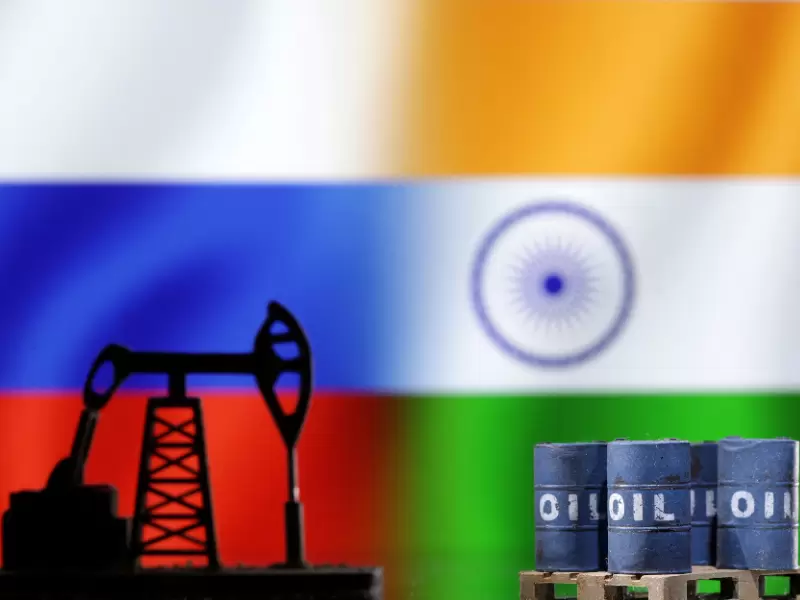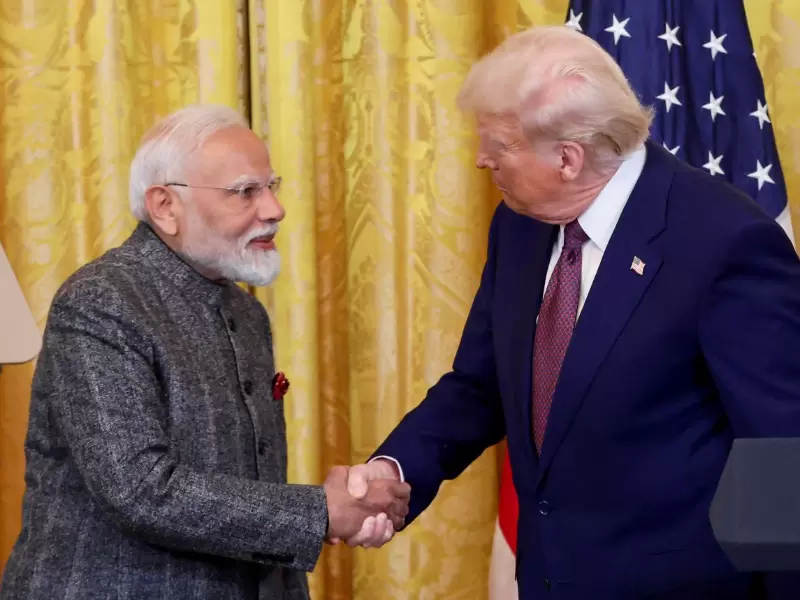Sticky business: India's purchases of Russian oil
India’s discounted Russian oil imports face pressure from U.S. tariffs and shifting geopolitics but remain central to its energy security strategy.
 FILE PHOTO: A view shows oil pump jacks outside Almetyevsk, in the Republic of Tatarstan, Russia July 14, 2025. / REUTERS/Stringer/File Photo
FILE PHOTO: A view shows oil pump jacks outside Almetyevsk, in the Republic of Tatarstan, Russia July 14, 2025. / REUTERS/Stringer/File Photo
India said on Oct. 16 that its energy priority was the interest of its citizens, after US President Donald Trump said New Delhi had promised it would stop buying Russian oil.
New Delhi neither confirmed nor denied it was shifting policy towards Russia.
Trump in August raised tariffs on Indian exports to the United States to 50 percent, with Washington accusing India of fueling Russia's war in Ukraine.
When Russia invaded Ukraine in 2022, India seized the opportunity to buy discounted crude.
Also Read: India says priority is consumers after Trump comments on stopping Russian oil
Exports of Russian oil to India surged, making Moscow India's top oil supplier.
Ukraine's Western allies have repeatedly sought to hobble Russia's export earnings.
But Russia has been able to redirect energy sales to other countries, ensuring a multibillion-dollar flow of funds.
How much does India import?
India, one of the world's largest crude oil importers, relies on foreign suppliers for more than 85 percent of its oil needs.
While New Delhi traditionally sourced most of its crude from the Middle East, it has shifted heavily toward discounted Russian barrels over the past three years.
In 2024, Russia accounted for nearly 36 percent of India's total crude oil imports, up from roughly two percent before the war, according to India's commerce ministry.
New Delhi bought approximately 1.8 million barrels of Russian crude per day in 2024. That made up around 37 percent of Moscow's total oil exports, the highest after China.
What impact have tariffs had?
New Delhi imported a little over 1.6 million barrels per day from Russia in September, according to trade intelligence platform Kpler.
This was roughly 160,000 barrels per day lower than average Russian volumes imported during the first eight months of 2025.
But analysts attribute the dip to pricing trends rather than policy shifts.
Since oil contracts are typically signed more than a month before delivery, experts say the impact of Trump's tariffs will become clearer by the end of October.
Meanwhile, the 50 percent duties have begun impacting India's exports to the United States, its top trading partner, according to New Delhi's commerce ministry.
Shipments to the United States sank 11.93 percent in September from a year earlier and were down over 20 percent from the previous month.
But India's overall exports for September stood at $36.38 billion, up 6.7 percent from a year earlier, buoyed by increased shipments to China and the United Arab Emirates.
Why does India rely on Russia?
India's foreign ministry has said it "began importing from Russia because traditional supplies were diverted to Europe after the outbreak of the conflict."
It also noted that Washington at that time had "actively encouraged such imports by India for strengthening global energy market stability."
The Western sanctions triggered discounts on Russian crude. That helped Indian refiners save billions of dollars on import costs—keeping domestic fuel prices relatively stable.
Although the price advantage narrowed from around 14 percent in the 2023–24 financial year to about seven percent in 2024–25, Russian crude remains economically attractive for India.
New Delhi insists its purchases have helped keep global crude prices stable.
Does India have an alternative?
India still sources crude oil from the Middle East—mainly Iraq and Saudi Arabia.
It accounted for a substantial 45 percent of total imports in 2024, down from the roughly 60 percent before 2022.
Kpler analyst Sumit Ritolia notes that India could switch to other suppliers without difficulty.
"Indian refineries can handle diverse crude grades, so the technical constraint is minimal," Ritolia said in a note earlier this month.
But, he added, it would likely be more expensive.
"Replacing Russian barrels is technically possible on paper, but politically and economically fraught."
ADVERTISEMENT
ADVERTISEMENT
E Paper
Video



 AFP
AFP













Comments
Start the conversation
Become a member of New India Abroad to start commenting.
Sign Up Now
Already have an account? Login